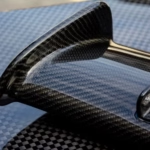Introduction: Why Prepreg Carbon Fiber Dominates Aerospace Today
In 2023, prepreg carbon fiber stands as a cornerstone of aerospace engineering, delivering exceptional strength-to-weight ratios that redefine aircraft design. This advanced composite material—carbon fibers pre-impregnated with resin—powers the construction of lighter, more fuel-efficient planes, from commercial giants like the Boeing 787 to cutting-edge prototypes at aerospace startups. For engineers pushing the boundaries of performance, procurement teams securing reliable materials, startup owners disrupting the industry, and multinational leaders scaling production, prepreg carbon fiber is a critical enabler.
At Great Light Metal Tech Co., LTD, we enhance this composite revolution with our 5 Axis CNC Machining services, producing precision metal parts that integrate seamlessly with prepreg-based structures. This blog explores the current state of prepreg manufacturing, its strength advantages in Boeing and Airbus applications, and the evolving debate between autoclave and out-of-autoclave (OOA) methods—while spotlighting how our machining expertise supports aerospace innovation.
Prepreg Manufacturing Unveiled: Resin Formulations and Layup Techniques
The magic of prepreg carbon fiber begins with its meticulous manufacturing process, tailored to meet aerospace’s unforgiving standards.
Resin Formulations: The Chemistry Behind Performance
Aerospace-grade prepregs rely on epoxy resins, prized for their high tensile strength (up to 80 MPa) and thermal resistance (stable up to 200°C post-cure). These resins are blended with curing agents and modifiers to achieve:
- Low Viscosity: Ensures uniform fiber wetting, reducing voids to below 1%.
- Custom Cure Profiles: Typically cured between 120°C and 180°C, depending on part requirements.
- Durability: Resists fatigue and environmental degradation, critical for long-haul aircraft.
Recent advancements include bio-based epoxies and toughened resins, which boost impact resistance by 15-20% over traditional formulations, addressing demands for safer, longer-lasting components.
Layup Techniques: Precision in Every Layer
The layup process dictates the final part’s quality:
- Automated Tape Laying (ATL): Machines place prepreg strips with sub-millimeter accuracy, ideal for large, flat structures like fuselage panels. ATL cuts production time by 30% compared to manual methods.
- Automated Fiber Placement (AFP): Advanced robotics lay narrow prepreg tows, perfect for curved surfaces like wing skins. AFP reduces waste by up to 25% versus hand layup.
- Hand Layup: Still used for small batches or complex shapes, offering flexibility but requiring skilled labor to avoid defects like wrinkles or resin pooling.
In 2023, hybrid ATL/AFP systems are trending, blending speed and adaptability to meet tight production schedules without sacrificing precision.
Autoclave Curing Cycles: Precision Under Pressure
For decades, autoclave curing has been the aerospace industry’s go-to for prepreg carbon fiber parts, delivering unmatched quality.
The Process
- Setup: Prepreg layers are stacked, vacuum-bagged, and placed in an autoclave—a pressurized oven.
- Conditions: Temperatures range from 120°C to 180°C, with pressures up to 100 psi (6.9 bar), applied for 2-6 hours.
- Outcome: The heat cures the resin while pressure eliminates air pockets, yielding laminates with void contents below 1% and fiber volume fractions of 60-65%.
Why It’s the Gold Standard
- Mechanical Excellence: Parts boast tensile strengths exceeding 2,500 MPa and interlaminar shear strengths (ILSS) of 80-100 MPa.
- Consistency: Essential for critical components like wing spars or pressure bulkheads, where failure isn’t an option.
The Catch
Autoclaves are expensive—capital costs often exceed $1 million, with energy-intensive cycles driving up operational expenses. Size limitations also restrict part dimensions, pushing manufacturers to explore alternatives.
Out-of-Autoclave (OOA) Methods: Cost Meets Capability
As aerospace seeks cost efficiency, out-of-autoclave (OOA) curing is emerging as a compelling alternative in 2023.
How It Works
- Setup: Prepreg layups are vacuum-bagged and cured in standard ovens at 120°C-150°C, relying on atmospheric pressure (14.7 psi) instead of autoclave force.
- Resin Design: OOA prepregs use low-viscosity resins with volatile-free curing agents to minimize voids without high pressure.
Performance Data
- Void Content: OOA parts typically show 1-2% voids, compared to <1% for autoclave-cured parts.
- Strength Trade-Off: Interlaminar shear strength drops by 5-10% (e.g., 70-90 MPa vs. 80-100 MPa), but tensile properties remain comparable.
- Cost Savings: Production costs fall by 20-30%, thanks to lower equipment and energy demands.
Applications in 2023
OOA shines for secondary structures—think fairings, nacelles, or interior panels—where slight performance trade-offs are acceptable. Startups prototyping small UAVs also favor OOA for its affordability and scalability.
Autoclave vs. OOA: A Head-to-Head Comparison
| Metric | Autoclave Curing | OOA Curing |
|---|---|---|
| Void Content | <1% | 1-2% |
| ILSS (MPa) | 80-100 | 70-90 |
| Cost per Part | High ($$$) | Moderate ($$) |
| Equipment Cost | $1M+ | $50K-$200K |
| Part Size Limit | Autoclave dimensions | Oven size (larger) |
| Best For | Primary structures | Secondary structures |
Insight: Autoclave curing wins for high-stakes parts, but OOA’s cost-effectiveness is closing the gap, especially as resin technology improves void suppression.
Strength Advantages in Boeing and Airbus Giants
Prepreg carbon fiber’s dominance is crystal clear in today’s aerospace titans.
Boeing 787 Dreamliner
- Usage: 50% of the airframe, including wings and fuselage, is prepreg carbon fiber.
- Impact: Cuts weight by 20% versus aluminum (e.g., 151,000 kg max takeoff weight vs. 189,000 kg for a comparable aluminum plane), boosting fuel efficiency by 10-12%.
- Strength: Specific strength (strength-to-weight) reaches 1,500 kN·m/kg, dwarfing aluminum’s 200 kN·m/kg.
Airbus A350 XWB
- Usage: Prepreg composites form 53% of the structure, notably the wings and fuselage skin.
- Impact: Reduces weight by 25%, enabling a 366-ton max takeoff weight with greater payload range (15,000 km).
- Stiffness: Modulus of elasticity hits 150 GPa, allowing thinner panels that maintain structural integrity.
Both leverage prepreg’s fatigue resistance—crack propagation rates are 10 times slower than in metals—extending service life and reducing maintenance costs.
Great cubedLight’s 5 Axis CNC Machining: The Metal-Composite Synergy
While prepreg carbon fiber rules the composite world, aerospace assemblies still demand precision metal parts. Great Light Metal Tech Co., LTD bridges this gap with 5 Axis CNC Machining.
What We Offer
- Precision: Tolerances as tight as ±0.005 mm for brackets, fittings, and mounts that mate with prepreg components.
- Materials: Aluminum (e.g., 7075-T6), titanium (Ti-6Al-4V), and stainless steel, tailored to aerospace specs.
- Speed: Online customization platform delivers prototypes in as little as 72 hours, supporting rapid iteration.
Why It Matters
- Integration: Metal parts reinforce composite structures at stress points, like wing-to-fuselage joints.
- Innovation: Our machining supports startups testing hybrid metal-composite designs, blending prepreg’s lightweight benefits with metal durability.
In 2023, our clients report a 15% reduction in assembly time thanks to our precision-fit components, proving that composites and metals are stronger together.
The Current Situation: Trends Shaping Prepreg in Aerospace
Sustainability Push
Aerospace is under pressure to go green. Bio-based resins and recyclable prepregs are gaining traction, with companies like Hexcel targeting a 30% reduction in carbon footprint by 2025.
Automation Surge
ATL and AFP adoption is up 40% since 2020, driven by labor shortages and demand for faster production. These systems now feature AI-driven defect detection, cutting rework by 25%.
OOA Growth
OOA’s market share has climbed to 15% of prepreg curing, fueled by cost pressures and resin improvements that narrow the performance gap with autoclaves.
Conclusion: Prepreg Carbon Fiber’s Bright Future
In 2023, prepreg carbon fiber remains aerospace’s secret weapon, balancing strength, weight, and efficiency like no other material. Autoclave curing holds its crown for critical parts, but OOA methods are carving a niche for cost-conscious applications. For engineers, procurement experts, startup visionaries, and global leaders, understanding these trends is key to staying ahead.
Great Light Metal Tech Co., LTD stands ready to support this ecosystem with 5 Axis CNC Machining, delivering metal parts that elevate prepreg-based designs. Ready to build the next aerospace breakthrough? Customize your precision components with us today.

















